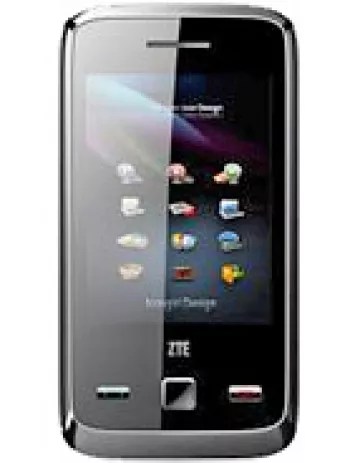
Overview of ZTE F951
The ZTE F951, announced and released in 2010, is a feature phone that managed to carve a niche for itself during the evolving mobile technology market. Despite being discontinued, it remains a device of interest due to its unique blend of features that catered to users' basic needs while providing enough technological advancement for its time.
Design and Body
The ZTE F951 features a compact and ergonomic design, measuring 108 x 55.5 x 12.6 mm and weighing just 100 grams. This makes it a lightweight option for users preferring portable devices. The phone supports a single Mini-SIM and is designed with simplicity in mind. It is available in a classic black color, imparting a professional look that appeals to various demographics.
Display
The device comes with a 3.2-inch TFT resistive touchscreen capable of displaying 256K colors. With a screen-to-body ratio of approximately 48.6%, the display resolution is set at 240 x 400 pixels, offering a pixel density of about 146 ppi. While not high-definition by today’s standards, the display is adequate for general phone usage like calling, texting, and basic multimedia functions.
Network and Connectivity
The ZTE F951 is equipped with GSM and HSPA technologies, supporting 2G and 3G bands. It can achieve speeds up to HSPA 3.6/0.384 Mbps, which was reasonably efficient during its era for web browsing and downloads. Connectivity options include Bluetooth 2.1 with A2DP, A-GPS for positioning, and USB 2.0. However, it lacks WLAN, which might be a limitation for users looking for wireless internet connectivity.
Camera
For photography, the ZTE F951 has a 5 MP main camera with autofocus capabilities. Although basic, this camera enables users to capture simple snapshots and videos. A selfie camera is available, although its specifications are minimal, reflecting the device's primary focus as a feature phone with essential multimedia capabilities.
Memory and Storage
The phone supports expandable storage through a dedicated microSDHC slot, allowing users to store more photos, music, and other files. While the internal memory specifications are not detailed, the inclusion of a card slot assumes provision for limited onboard storage. The phonebook and call record functionalities are also present, with support for photocall.
Sound and Music
For audio, the ZTE F951 features a loudspeaker but lacks a 3.5mm headphone jack, which could be seen as a drawback for those who enjoy listening to music privately. However, it includes a stereo FM radio with RDS, offering users access to broadcast radio without needing an internet connection.
Battery Life
The phone is powered by a removable Li-Ion 1250 mAh battery, which provides sufficient power for basic day-to-day operations typical of feature phones. The removable nature of the battery allows for easy replacement, extending the device's life cycle.
Operating System and Software
The ZTE F951 runs on a feature phone operating system, notable for its straightforward interface and functionality. It includes features like an accelerometer sensor, basic browsing using WAP 2.0/xHTML, and support for SMS, MMS, and Email messaging. Java support is available with MIDP 2.0, allowing for simple games and applications to be run on the device.
Conclusion
In conclusion, the ZTE F951 is a feature phone that serves its purpose well within the constraints of its category. Its primary selling points during its release included a respectable camera, expandable storage, and a simplistic user interface. Despite its discontinuation, the phone can still appeal to users in need of a basic, reliable communication device with no-frills functionality.
Key Features of ZTE F951
- Supports GSM and HSPA network technologies.
- Compact and lightweight design at 108 x 55.5 x 12.6 mm and 100 g.
- 3.2 inches TFT resistive touchscreen with 256K colors, providing a clear display.
- Expandable storage via microSDHC card slot.
- 5 MP main camera with autofocus for quality photos.
- Includes A-GPS for location services.
- Features stereo FM radio with RDS for entertainment.
- Includes an accelerometer sensor for responsive navigation.
- Removable 1250 mAh Li-Ion battery for convenience.
Disadvantages of ZTE F951
- Outdated technology: Supports only GSM and HSPA networks.
- Resistive touchscreen: TFT resistive screen can be less responsive compared to capacitive touchscreens.
- Low display resolution: 240 x 400 pixels result in low pixel density (146 ppi).
- Lack of advanced connectivity features: No Wi-Fi capability.
- No 3.5mm headphone jack: Limits options for using standard wired headphones.
- A-GPS only: Lacks a fully-featured GPS system.
- Limited internal features: No mention of internal storage and RAM capacity.
- Discontinued status: The device is no longer being produced or supported.
- Basic front camera: No specific features or video capability for the selfie camera.
- Low-speed data transfer: Maximum speed of 3.6 Mbps on HSPA networks.
View Also
More Phones
All Rights Reserved +14266 Phones © Mobilawy 2025

























